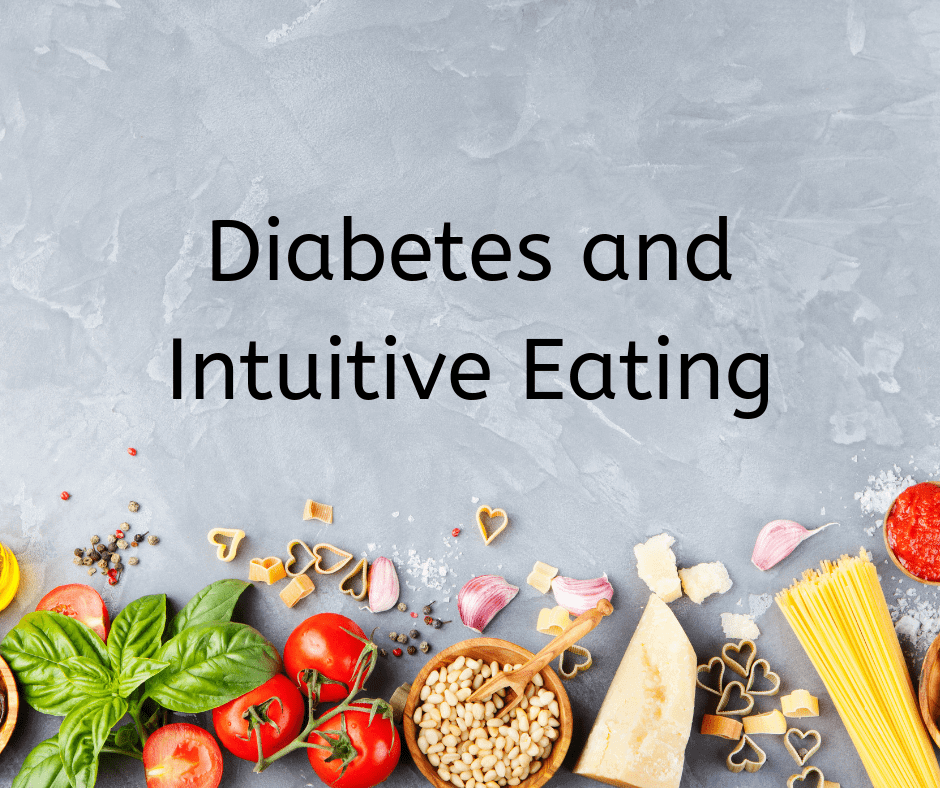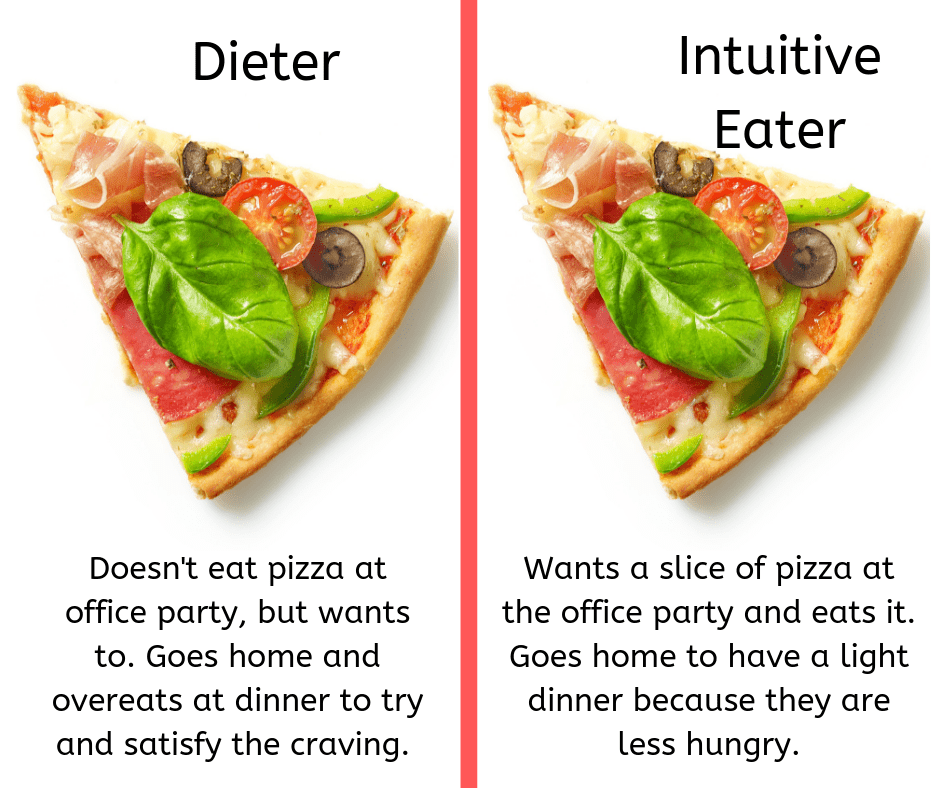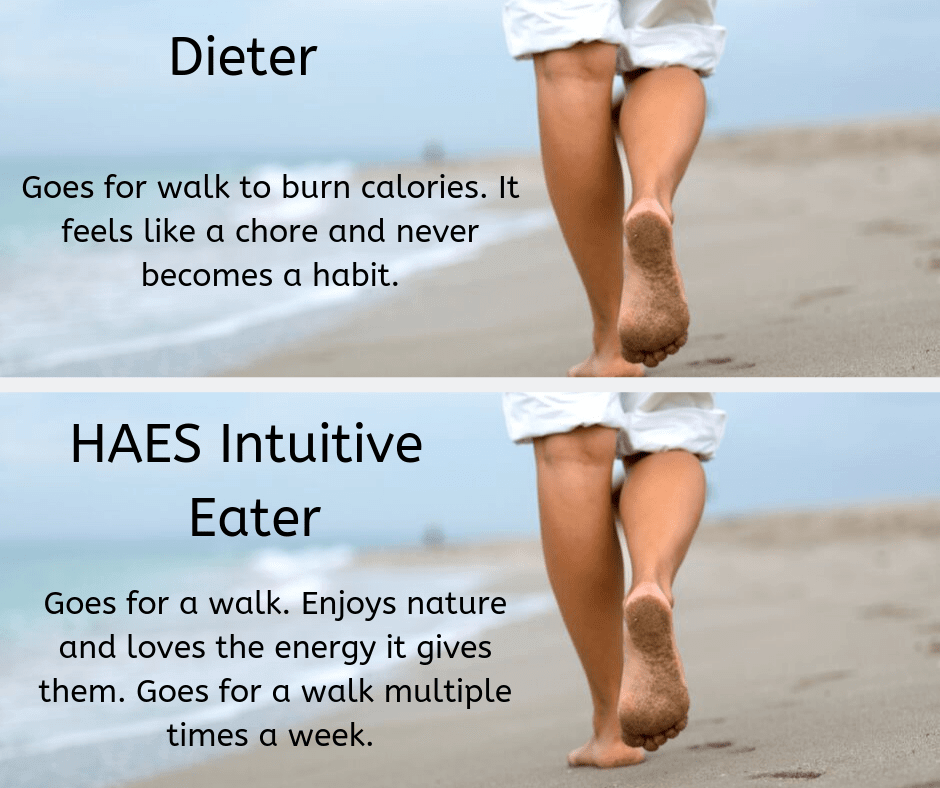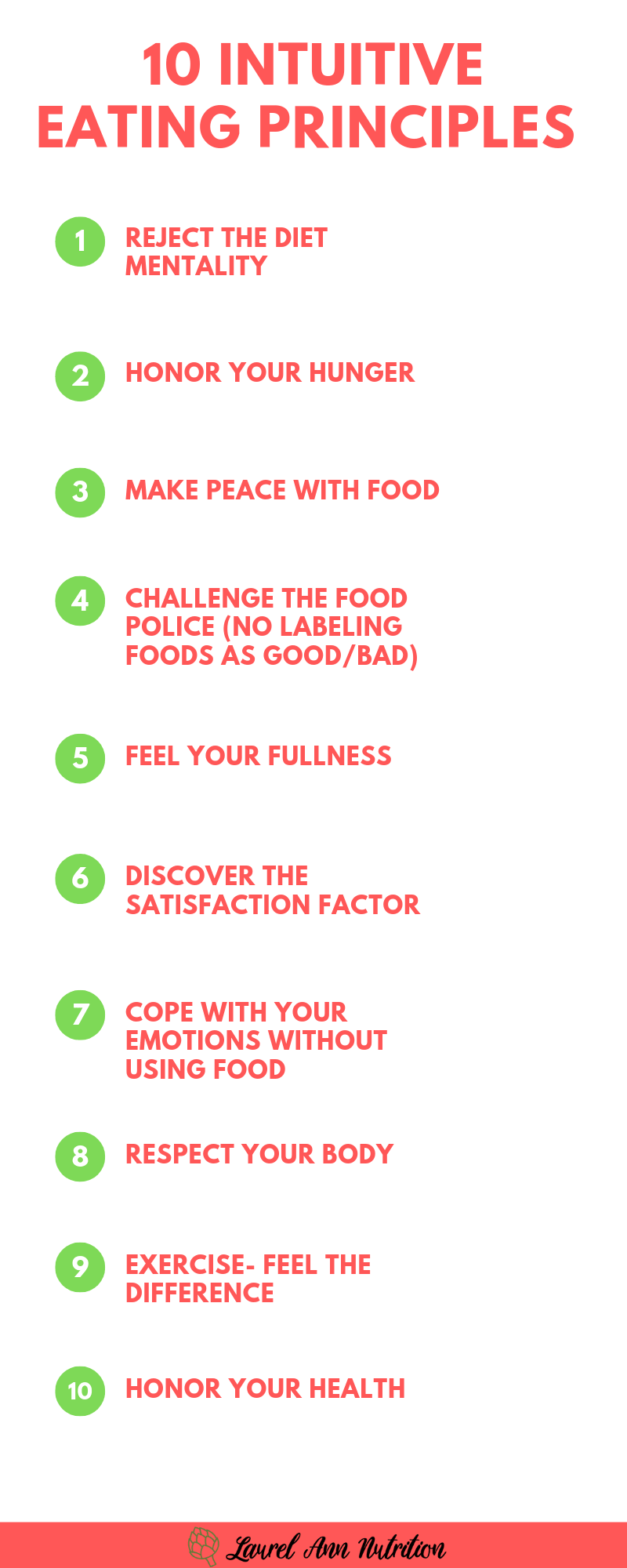Diabetes and Intuitive Eating
That sounds crazy, right? Ditch dieting? You are probably thinking "um ya I could do that but my numbers would be crazy and my doctor would hate me.”
Well, what if I told you that it’s time to say goodbye to the days of diets to manage diabetes and hello to a life filled with a variety of foods that all fit.
Updated 8/9/2022
All information provided is intended to be used for informational purposes only. This article is not medical advice nor is it intended to replace medical advice.
Why Dieting Doesn’t Work
First, let’s talk about why dieting doesn’t work.
And just so we are all on the same page dieting is defined as “restricting oneself to small amounts or special kinds of food in order to lose weight.”
Dieting slows your metabolism. There is a ton of research that shows that dieting, in fact, slows down your metabolism (1, 2, 3, 4). This is a main reason why dieters gain their lost weight back (if not MORE weight), typically within a year.
Have you ever tried a diet because your friend LOST SO MUCH WEIGHT doing the diet? How long ago was this? Have they gained the weight back? Did you lose weight and gain it back? I am sure you can find plenty of examples in your life where this is true.
Dieting increases your appetite. Our bodies are pretty smart. A dieter’s body will actually produce hormones that stimulate the appetite (5). Studies show that we even out our food intake over time, typically 4-7 days (6).
For example, a dieter may skip breakfast, have a light lunch, and even a light dinner. Over the next few days, as the appetite increases, the dieter will find themselves eating more and more. So, over a week’s time there is no decrease in eating and calorie intake may have actually increased to more than before the diet started(6).
Dieting increases consumption of caloric food (6, 7). Crazy right? A craving is a way for our body to tell us what nutrients we need. When we deny this craving our bodies find a way to make up for this nutrient need. This happens by causing us to eat other foods that do satisfy this nutritional need.
For example, we have a sweet craving. Our bodies are telling us to eat carbohydrates. A dieter may try to satisfy this craving with a diet soda or diet candy bar. This does not satisfy the dieter’s carbohydrate needs so the craving persists. The dieter may try eating another diet candy bar or soda but the craving continues. This can lead to binge eating or overeating on a carbohydrate that is within the rules of their diet. You can see how harmful this can be for the blood sugar.
Dieting is a predictor of weight gain. In a review of 25 studies looking at dieting and measured weight over time, all but one found that dieting/restrictive eating individuals had significant weight gain (8).
Dieting often results in short term weight loss but is often regained (9). This weight loss to regain may lead to a change in body composition from lean muscle to increased body fat, though not all studies agree (10, 11).
Dieting causes emotional damage. I could write an entire article just on this topic. But let’s stick to the basics… Studies in animals show that diets impair brain function, stress response, and how things are processed (12). Dieting may also cause or worsen depression (12).
And don’t even get me started on guilt! Guilt is typically behind every bite of food for a dieter.
Inspired by Intuitive Eating A Revolutionary Program That Works
Phew. I could keep going but I think you get the point. DIETING DOESN’T WORK. And it’s no fun. So, what do we do instead?
Mindful and Intuitive EAting
Okay, some of you may be thinking “You’re telling me that the dieting I have been doing is actually hurting and ALL I have to do is use my mind to eat better? YA RIGHT!”
Well, something like that…but yes!
What does the research show?
This study showed that individuals trained in mindful eating and diabetes self-management had healthier food choices, some weight loss, and better blood sugar management in adults with type 2 diabetes (13).
Intuitive eating was linked to improved glucose (sugar) control after pregnancy in women with gestational diabetes (14).
Another study found that intuitive eating was associated with better glucose control in type 2 diabetes (16).
Improved glycemia (aka blood sugar measurements) was strongly related to mindful eating and intuitive eating in adolescence with type 1 diabetes (17).
And I could, of course, keep going… but you get the idea. Dieting doesn’t work, mindful and intuitive eating does. So what is exactly is mindful and intuitive eating?
What is Mindful and Intuitive Eating?
Mindful Eating: paying attention to the present moment of eating without judgment
Have you ever caught yourself eating while watching TV… just look down and find your plate is empty? Not remembering where all of that food went? That is the opposite of mindful eating.
Intuitive Eating: involves mindful eating while taking note of physical and emotional sensations experienced while eating
Intuitive eating takes mindful eating to the next level by including awareness of hunger levels and emotions while eating. Like mindful eating, this is all done without judgment!
HAES (Health at every size) DIABETES
Now, while weight loss may occur with intuitive eating, it is certainly NOT the focus. The focus from weight needs to be removed before you can truly eat without judgement.
Easier said than done but first thing to do is throw away the scale!
Next, it is important to learn that weight loss is not necessary for blood sugar management. You can learn more about this in our Health At Every Size with Diabetes blog post.
By removing the focus from weight you can focus on what makes your body feel great.
Individuals who used HAES and intuitive eating have shown to have improvements in blood pressure, cholesterol, depression, and self-esteem compared to dieters (18).
Intuitive Eating- Where Do I Start?
Yay! You have decided to become an intuitive eater but where to begin… Lets first take a look at the 10 principles of intuitive eating.
Next, focus on satisfaction and unconditional permission to eat.
When eating intuitively with diabetes start by:
Adding a former “bad” food at mealtime
Adding carbohydrates to each meal and check-in to see how you enjoy it
Choosing foods based on taste
Looking at your blood sugar with curiosity, not judgement
Ordering your favorite meal at a restaurant and focus on the pleasure of the meal
Stop half-way through a meal to check-in and ask yourself: Do I still enjoy this? Am I getting full?
Start your JOURNEY
Learning to become an intuitive eater takes time and a lot of trial and error. Take away the focus from restriction and spend time enjoying food again!
So, how do you start?
First, download the free Eating Awareness Journal to help you become a mindful intuitive eater…while reducing the blood sugar!
Next, hang out with me on Instagram to learn more about intuitive eating for diabetes @dietfreediabetes
Finally, If you are looking for more help you can always book a free call with me. We can discuss your goals and create a path to success. Just click here to schedule a free call.
Author: Laurel Ann Deininger, MS, RD, LDN, CDCES
Article updated on 11/19/20







